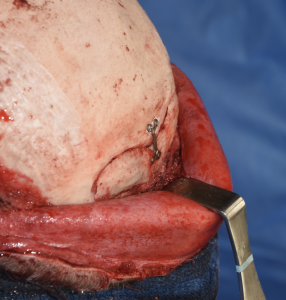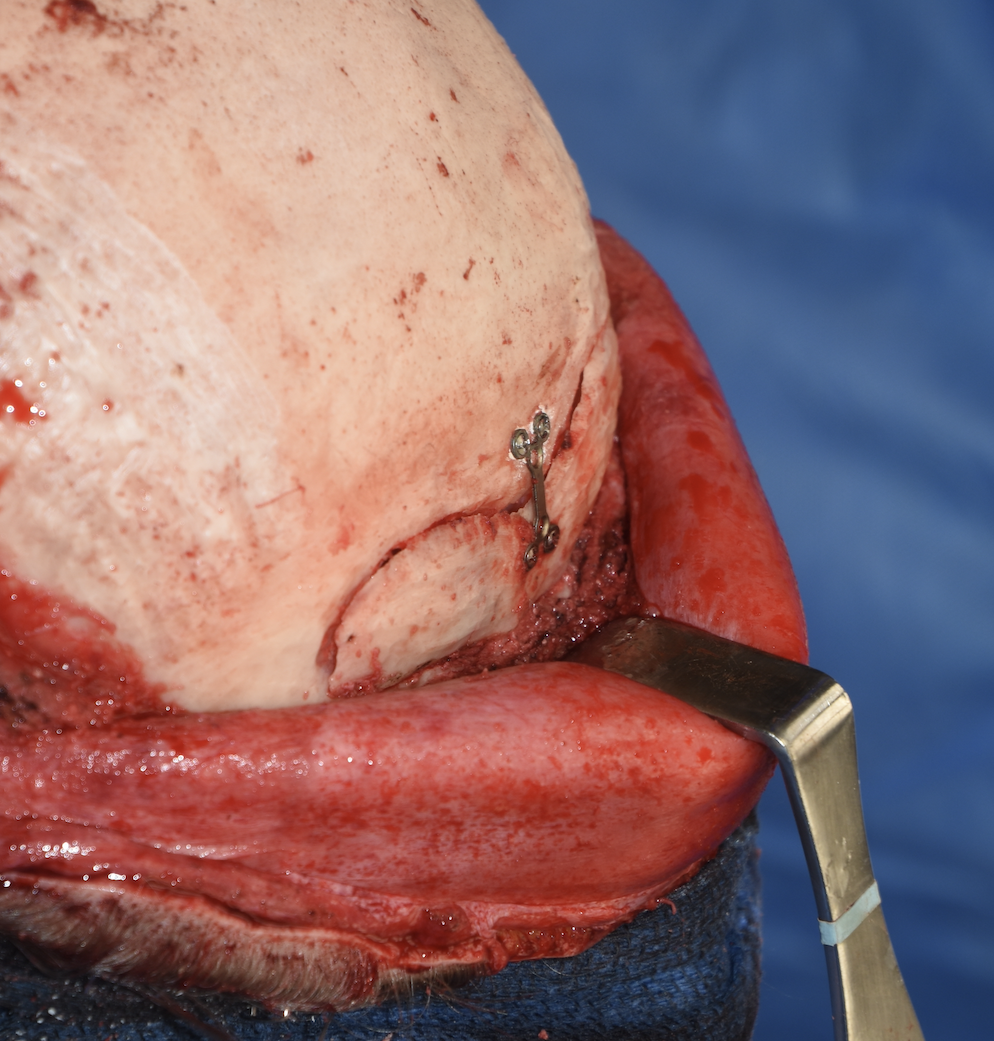
In the November/December 2022 issue of the journal of Facial Plastic Surgery & Aesthetic Medicine an article was published on this topic entitled ‘Frontal Bone Cranioplasty for Facial Feminization in Gender-Affirming Surgery: Can Fewer Screws Fixate Bone and Avoid Nonunion? In this paper the authors examined a large series of patients (305) who had forehead reshaping with a bone flap setback brow bone reduction procedure over a 7 year period with microplate and screw fixation. They evaluated whether the amount of fixation (2 screws on each side of the osteotomy vs one screw on each side) affected the potential complication of bony non-union of the bone flap.This specifically refers to the use of either 2 plates with a single or double screw on each side.
In their studied patients no signs or symptoms of bone flap mobility were noted on examination. They concluded that the more conservative fixation (one screw on each side of the plate of the bone flap does not increase the risk of bony nonunion in forehead reshaping gender-affirming surgery.
The brow bone is a non-loaded static bone structure that is not exposed to any significant displacement forces. (short of external trauma) Thus it is not surprise that the amount of bone fixation needed is fairly minimal. Before plates and screws wire fixation was used with good healing of the brow bone flap. And today some surgeons still use wire fixation in some parts of the world without reported bone healing problems. Thus it could be safely assumed that a single plate with only s single screw on each side should be adequate to ensure good bone healing.
Dr. Barry Eppley
World-Renowned Plastic Surgeon



